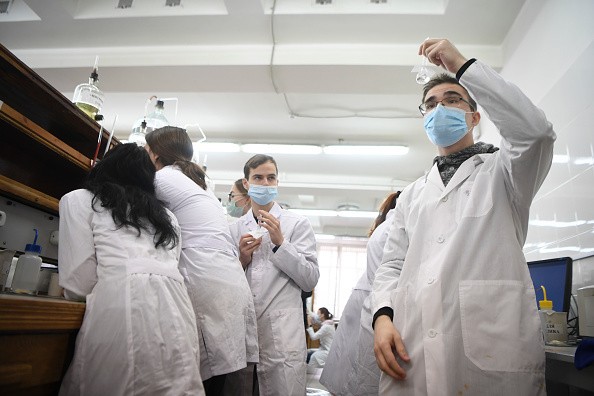Queen's University students submitted their science experiment, and third-year health sciences student Cole Munro's group was selected by NASA for the International Space Station.
NASA chose three Queen's University finalists for the selection of the proposal for the science experiment.
Cole Munro's Group Science Experiment Selected by NASA

Cole Munro's group's proposal was out of this world and was expected to be carried out on the International Space Station.
"It's fantastic, really. Our group worked really hard, and our entire team really came together to make this proposal happen. Even though I'm here talking today, it's really a testament to everyone's hard work," Munro said.
According to Global News, Munro's experiment will be the first of its kind to be conducted in space. His experiment aimed to investigate microgravity's effect on plant proteins, which would help astronauts stay healthy while on missions in outer space.
He said their proposal evaluates the impact of lectins, which use plant proteins to fight against bacteria. He added that their proposal would assess whether they improve antibiotics' effectiveness on Earth and in space.
Munro's group would not travel to space themselves, but the experiment would be conducted by astronauts on the space station.
The estimated launch date of a cargo flight to deliver the necessary equipment to the ISS will be in late spring. However, the work does not stop once the experiment is completed in space.
"Once the experiment comes back from the International Space Station, the analysis of the samples will be conducted here in the Discovery Labs," Diane Tomalty, a co-instructor for the course, said.
As space travel for science and recreation becomes more popular, these experiments may help improve life on Earth.
Read Also : Police Arrested Gaza Pro-Ceasefire Protesters After Blocking Los Angeles Highway During Demonstration
Filipino Experiment at International Space Station
William Kevin L. Abran, a junior applied physics major at the University of the Philippines Los Baños, proposed the experiment "Rotation of 'Dumbbell-shaped' Objects in Space."
The Philippine Space Agency announced that the experiment would explore the long-term stability of dumbbell-shaped objects' rotations in a free environment, or microgravity, which could have far-reaching implications in space science.
Abran's proposal claimed that rigid objects like dumbbell-shaped rotators could revolve on both the longitudinal axis and along the transverse axis.
The two distinct principal moments of inertia, a rotation along the main axes ensures its stability and will not result in the Dzhanibekov effect.
On the ground, where gravitation forces are strong, it will be easier to simulate these motions by pre-determining the center of mass or the constant application of force.
However, the proposal explained that in a free environment, like in microgravity, rigid objects could rotate continuously for a fair amount of time, so it would be possible to observe the long-term stability of their rotations.
Abran's proposal was one of the six experiments chosen for the ISS, following a selection process under the Asian Try Zero-G 2022 competition.
He was among the 24 international competition's finalists this year, receiving 201 submissions from 480 students, young engineers, and researchers.








